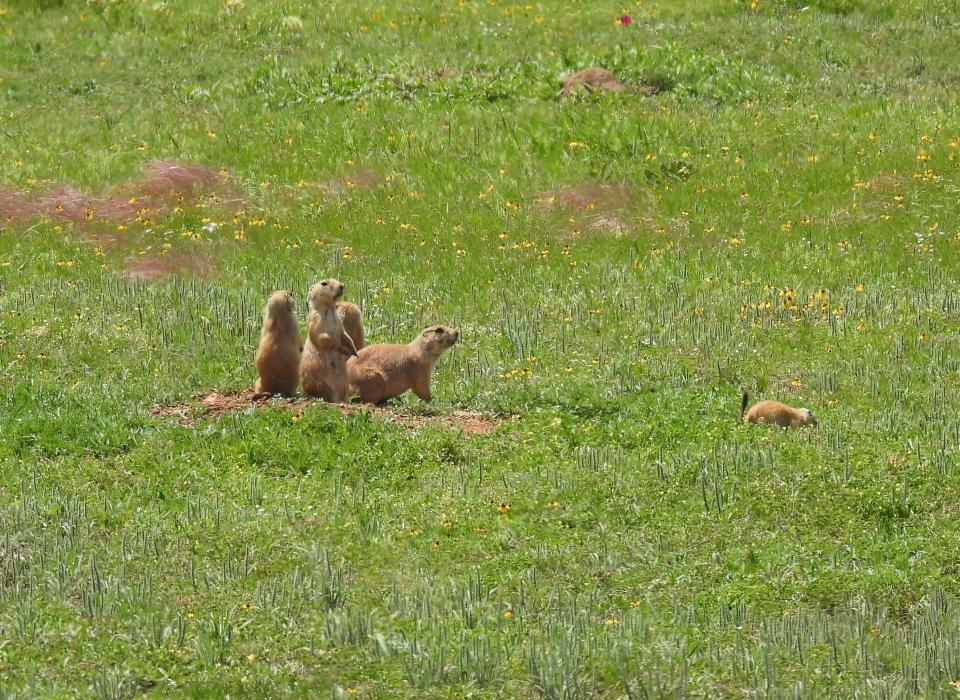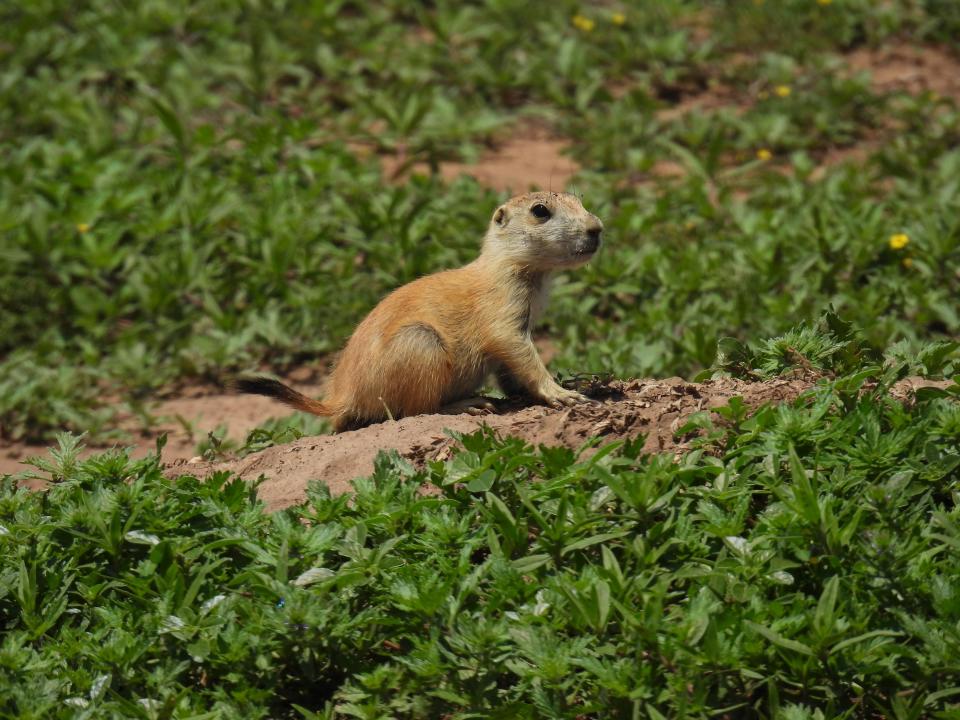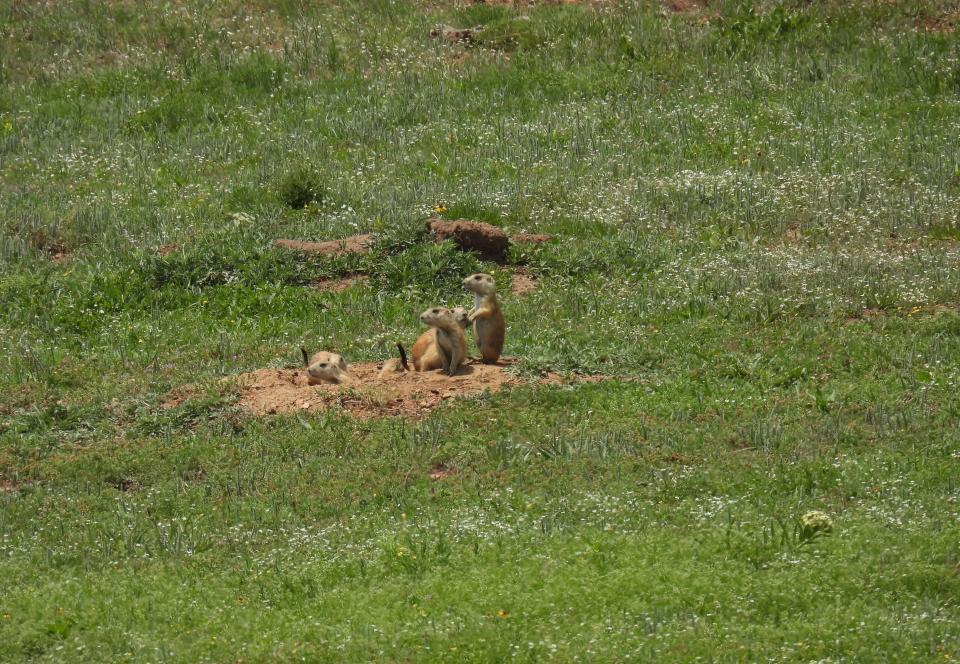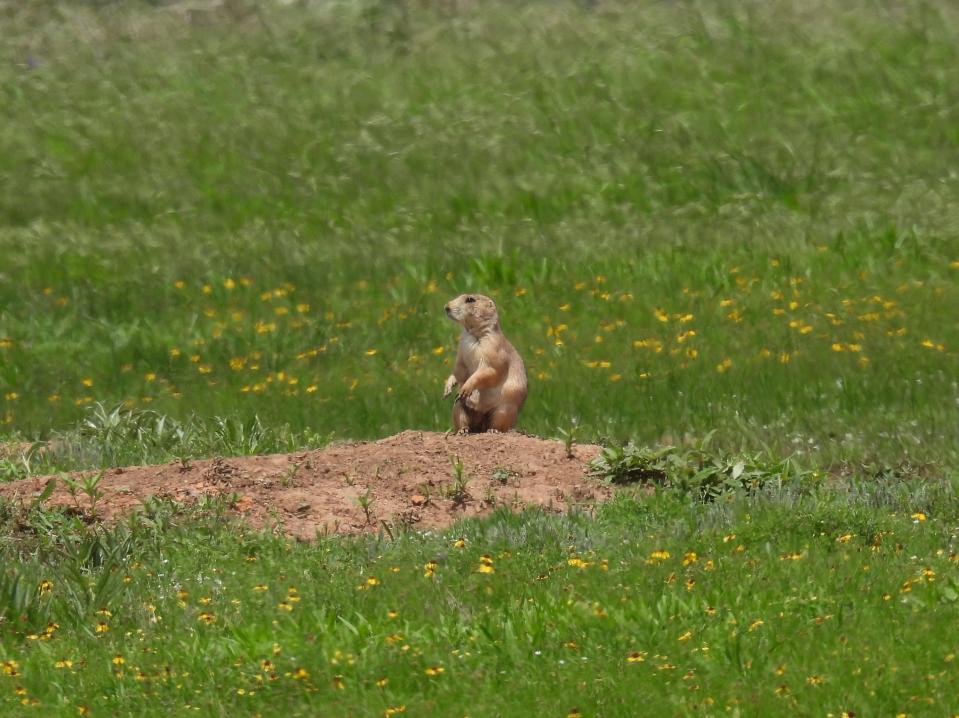Goetz: 'Wee-Oo,' sounding off about this often misunderstood steward of grasslands
Natural communities and ecosystems are often maintained by one or more keystone species within them.
A keystone species is a species upon that other species in an ecosystem depend on so much that if it were removed, the ecosystem would undergo a drastic change.
Keystone species of prairies include grasses, mychorrizal fungi and symbiotic, soil bacteria, and various species of grazing animals.

The grazers which you probably think of in our Northcentral Texas and Southwestern Oklahoma grasslands would be, in the past, the native bison — buffalo — and pronghorn antelope and, in the present, introduced cattle and horses.
Misunderstood and underappreciated: Black-tailed prairie dogs
However, several species of ground squirrels are also keystone grassland species even though they are often misunderstood and underappreciated.
The black-tailed prairie dog is the largest species of ground-dwelling squirrel in our region. Adults have stocky, robust bodies and a head and body length of 11 -13 inches and tail length of approximately 4 inches.
Prairie dogs have fairly short legs with well-developed claws on their feet to facilitate burrowing. Their ear pinnae — ear lobes — are distinct but small and close to the skull.

Prairie dogs have large eyes positioned toward the top and sides of their skull which give them excellent vision and the ability to detect danger from the surrounding area, as well as from the skies above them.
Their short, uniform, light tan to yellowish fur is washed with black hairs, and their bellies are a lighter tan to cream color. The tail is sparsely haired, and its tip is slightly tufted and dark gray to black in color.
Once sprawling towns
According to historical accounts, prairie dogs once had an almost ubiquitous distribution throughout our Rolling Plains region.
This is difficult to imagine now, but, in 1902, naturalist Merritt Carey observed what he considered to be “an immense prairie dog town extending north to the Red River and nearly 100 miles to the south."
Likewise, Vernon Bailey, in his 1905 "Biological Survey of Texas," noted an almost continuous distribution of prairie dog towns from Clarendon southward to San Angelo.
Conversion and modification of lands for intensive agriculture and ranching pursuits and urban development and infrastructure projects have significantly reduced the number and size of prairie dog towns throughout our region.
However, black-tailed prairie dogs still occur within most of this original range.
Homes on the range
Prairie dogs prefer short grass prairie habitats with soils of sufficient depth for construction of extensive burrow systems. Each burrow may have multiple entrances and several branching side chambers for sleeping, nesting, latrines and food storage.
Burrow entrances vary in shape from rounded, dome-like openings to more elevated, volcano-shaped entrances.

The entrance mounds are intentionally constructed by the prairie dogs and provide excellent lookout locations, prevent excessive flooding from thunderstorms and heavy rains and also increase air flow and circulation throughout the burrows.
Prairie dog towns are organized into large areas referred to as warrens and smaller units called coteries. Coteries are comprised of extended family units of one or more reproductive age males and their harems of females.
Aggressive competition and territorial behavior do not occur within coteries; however, the boundaries of each coterie are defended against intrusion from neighboring prairie dogs.
Sexual maturity is attained at 2 years of age, and females give birth to a single litter of four to five young during spring.

Young prairie dogs begin foraging upon grasses and forbs shortly after first emergence from their burrows and, after approximately one month, begin to disperse to the boundaries of their coterie.
'Wee-Oo'
Black-tailed prairie dogs are known for their sociality and rather complex systems of vocal communication and, in fact, their scientific genus name — Cynomys — means "dog mouse," probably referring to some of their barking calls.
Variations of the calls signal threats, distress, warnings and contacts to members of the coterie and the entire colony.
The distinctive contact call of the Black-tailed Prairie Dog has been described as a "Wee-Oo" call. It is produced as the prairie dog throws its head up and back, stands upright and raises its forelimbs outward and upward.
Family members within coteries usually forage, stand watch for predators, explore and play together. Whenever a threat is perceived, all will run with a shuffling gait to the nearest burrow entrance and duck inside.
Natural predators of prairie dogs include coyotes, foxes, badgers, eagles, prairie falcons, red-tailed hawks, rattlesnakes, and, in the past, the black-footed ferret.
Dining 'dog mouse' style
Prairie dogs forage upon grasses and selected forbs during daylight hours and carry some food in their internal cheek pouches to store within burrow chambers for later consumption.
Sufficient water is obtained from eating plant leaves, stems, and roots; therefore, prairie dogs in their natural environment do not need to drink.
They do not hibernate during winter months but may undergo a torpor-like sleep to reduce their food requirements during cold or inclement weather.
Grasses and forbs are grazed close to the ground, and prairie dogs will intentionally cut brushy and woody plants short within and around their colonies/towns. This is presumably to increase or maintain unobstructed fields of view for detecting approaching predators.
Their VIP role in nature
Much debate and discussion revolves around the black-tailed prairie dog’s effects upon grasslands.
Total livestock forage may be reduced inside prairie dog towns but there is evidence that prairie dogs effectively decrease brush and invasive, woody plants. Also, pronghorn antelope, bison and cattle selectively forage for the short grasses and plants within prairie dog towns.
Prairie dog towns provide homes and habitat for other grassland species such as skinks, toads, other amphibians and reptiles, rabbits, mice, burrowing owls, horned larks and additional ground-nesting birds.
Therefore, complete removal of prairie dogs from an area affects the entire community.
Regardless of your opinion of prairie dogs, the essential role these squirrels have upon grassland environments is not easily discounted.
Personally, I’m always amused and entertained by these rotund rodents’ activities and antics whenever I have an opportunity to observe them working and playing.

Jim Goetze is a retired professor of biology and former chairperson of the Natural Sciences Department of Laredo College with an avid interest in all aspects of the natural world. He can be contacted at gonorthtxnature@gmail.com.
This article originally appeared on Wichita Falls Times Record News: Jim Goetz: Prairie dogs, often misunderstood stewards of grasslands

